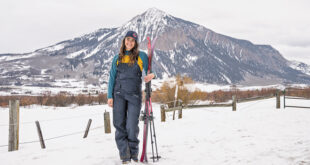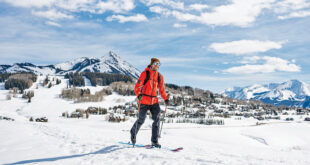by Dawne Belloise
Tucked away around a corner and down a darkened hall in the quiet back of the old town offices, there is Andy Tyzzer’s office, stuffed with Korean wall scrolls and cases of instructional books on the martial arts. Andy has been a Tang Soo Do instructor to many, with 900 students coming through his studio, ranging from the very young to retirees.
Tyzzer started training in the art in 1973, at Woodlands Hills Tang Soo Do in Woodland Hills, Calif., while he was still an undisciplined and skinny college student. He started with one of the best and most demanding instructors, Bob Burbidge, who had trained under the famed Chuck Norris.
Practicing the art had a profound impact on Tyzzer that carried over into his college studies and life in general. Although martial arts films were then at their height of popularity, the actual practice went far beyond the extremely difficult kicking and fighting. For Tyzzer, it was all about the tough training and even more important, the discipline and respect. The discipline not only made him a forward moving, better person; he discovered he was achieving much more in college.
He attended college first at Pierce Junior in Woodland Hills, later transferring to California State University at Northridge, best known as the epicenter of the last great California earthquake in 1985. Tyzzer was enrolled for a couple of years longer than he had anticipated because, he laughs, he was not only working to pay his way through school, but he was training hard in the martial arts—and then there was the beach. It was the mid-1970s and he had been in school for almost six years and felt it was time to get out of college. He was only one test away from getting his black belt in Teng Soo Do but he put his training on hold and graduated in 1979 with a bachelor of science degree in business with a concentration in finance.
While he was still in college, Tyzzer was already becoming a successful accountant in the business world. He participated in a pilot program called Service Corp of Retired Executives, or SCORE, started by the Small Business Administration to pair organizations with business students to help them with their financial management. He also volunteered for a pilot program through the IRS called Voluntary Income Tax Assistance, or VITA, which gave him college credit for being trained and sent to places where people were not doing their tax returns, either because they didn’t have the resources or they were (understandably) afraid to do so.
Both programs helped him put it all together in the experiential world when he started his own tax practice and was recruited by a large company, Tax Corporation of America. By the time he was 21, Tyzzer had his own business as an accountant and tax consultant. He hired two of his college friends to work with him and was well on his way to being super successful when Tyzzer decided he didn’t want to do that high stress career thing, especially in Los Angeles where he was living.
Although he enjoyed the finance aspect of his chosen career, he wanted out of the accounting part, and out of L.A. The mountains of Colorado, which he had visited right out of high school in 1973, began to call to him.
Having been a Boy Scout in his childhood home of New Jersey, and after hiking 50 miles of the Appalachian trail, and after he backpacked in the Olympic National Park for two weeks the summer after high school graduation, Tyzzer decided to visit his cousin, Patricia Dawson, in Crested Butte.
Tyzzer hitchhiked—the preferred mode of transportation for many in 1973—from Washington State to Crested Butte. He arrived at Dawson’s funky little river house at the end of the alley on the southwest side of town. All of the community was dirt, funk and far smaller, and truly the end of the paradisiacal road. He was 18, wide-eyed, and indefatigable when he hiked straight up the old lift line on Cement Mountain. He stayed there for an entire week, thinking about where his young life would take him and enjoying his time in the wilderness. This is what called him back to Crested Butte when he had had quite enough of the frantic L.A. lifestyle.
Tyzzer recalled the joy of spending his childhood on New Jersey lakes, where in the summers he went shoeless playing in the woods and on the beach, just a kid getting into the muck, fishing and sailing and swimming. And even though he had a highly successful business and a great relationship with his then-girlfriend, he decided to get the hell out of Los Angeles, noting that during the several years he had lived there, the west end of that valley had changed drastically. Where there were strawberry and corn fields by his home, there were now high-rise buildings and the air had turned foul. So he said to himself, “You know what? I want to move to the mountains.” He wanted to ski. And Crested Butte topped the list.
Tyzzer hitchhiked back out to Crested Butte in the autumn of 1979 and one week later had a place to live and a job as accountant with a local airline that flew small planes into Denver and Aspen, run by Ron Rouse and operating out of Crested Butte. During the huge snow winter of that year, the planes couldn’t get out to fly, and there was an economic turndown as a recession hit. The airline couldn’t maintain operations since they couldn’t fly and the business was forced to fold.
Luckily, Tyzzer was in demand as an accountant. The following year he worked for a large property management company on the mountain. In another unforeseen turn of weather events, Tyzzer recalled that there was essentially no snow in the winter of 1980 to 1981 and he took a job as the business manager for the Crested Butte Fire Protection District.
During all this, Tyzzer still wanted out of having to sit in an office all day; he wanted out of business management and finances. He was doing all the fun things Buttians do, skiing, backpacking and living life to its fullest—and in 1983 Tyzzer became certified as an EMT. He especially enjoyed the community service aspect.
He also attended ski patrol school and realized it was exactly what he wanted to do. At the time, Crested Butte Mountain Resort was pushing to improve the level of medical certification of ski patrol and he was already an EMT and had done well in the exam portion of patrolling. It landed him a part-time job on the mountain.
He was still working full-time for the fire protection district and a couple of years later was hired on full time with the ski patrol, leaving the fire district position. By 1986 he had switched to summer construction work while waiting for the lifts to start up again for his winter ski patrolling.
Twixt seasons, in the spring and early summer, he’d ski the peaks every morning, driving the old 1962 Ford up the Slate, sleeping in the back, waiting for the sun and then hiking up to carve lines down Augusta and still be to work on time by 9 a.m. Life was good.
One morning, while he was on top of Augusta, waiting for the sun to come up to warm up the snow, Tyzzer spied a couple of ski patroller friends and another he didn’t know. The trio was also hiking to the top for some turns, and it was there and then, on Augusta’s summit, that he met his future wife, Sue Heller. It was 1987, and they married in ‘95. The two have a daughter, Taylor, who is 18 and a Crested Butte Community School 2016 graduate, and son Dylan, 13, continuing on at CBCS.
After Tyzzer became a ski patrol full time, his thoughts returned to getting that black belt degree he had put aside so many years prior. He had continued to train solo in any spare time he had between jobs. He competed in a regional tournament in Grand Junction and won in his division. Tyzzer explains that the Korean style Do Bahk, the “uniform” of this particular martial art, is distinctive with its color lapel trim.
He hadn’t seen another Tang Soo Do practitioner in the area but there were many at the tournament who came from Aspen. Their instructor invited him to train with them.
During off seasons, Tyzzer moved to Aspen to continue his training, basically having to start over to achieve a black belt degree, which he finally earned in 1990 in his fourth year, a mere 17 years after he had put his goal on hold. He laughs that it might seem that he’s a little slow, but points out that life happens and you keep moving forward. Theoretically, there are nine levels of black belt degrees, and since then, Tyzzer has earned five, traveling to Korea five times to train and take the weeklong tests at the master level. Tyzzer is also a two-time national champion for forms in Tang Soo Do, winning the title in 2004 and 2006.
Tyzzer left the ski patrol in 1993 to create Tang Soo Do of Crested Butte. His first studio was in the old depot, and classes started up that November. The first year saw only adults practicing, but by the second year, the studio enrollment grew exponentially when he offered children’s classes.
He expanded to Gunnison in 1998 and the studio began teaching an accredited course in character education through traditional martial arts training in the middle school district.
They became a nonprofit in 2003 because Tyzzer felt it would better serve the community. When the Crested Butte town offices moved into the old school, Tang Soo Do was allowed to train there for free, where they remain today, although, Tyzzer says, it’s no longer free rent. They continue the instruction in Gunnison at the Gunnison Arts Center, with adult classes entirely full so they’re not able to accept new students.
Tyzzer smiles in his quiet way and says of his years in this valley, “Why go someplace else? This is the best place, and when we leave and then return, it just affirms that this is the best place for us. It never happens that we come back with a better place to be. Our roots just keep getting deeper. It’s a great place to raise a family.”
And of his lifelong practice, he walks the way of his art. “I’m not going to stop training. Ever. Someone once asked a painter, ‘Why do you paint?’ His answer, ‘Because I must.’”
 The Crested Butte News Serving the Gunnison Valley since 1999
The Crested Butte News Serving the Gunnison Valley since 1999





